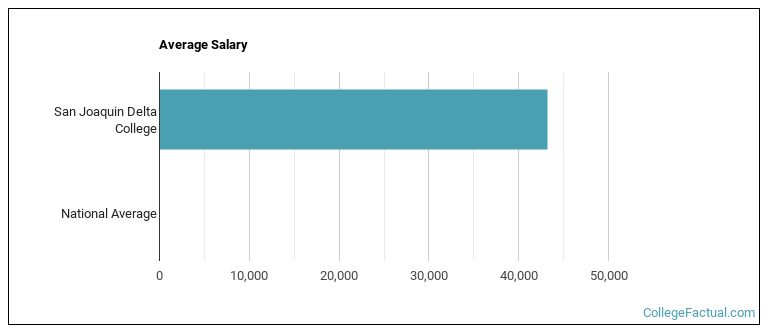 by our College Data Analytics Team
by our College Data Analytics TeamCollege Factual recognizes the best colleges and universities in its annual rankings. These rankings include categories for best overall colleges, best colleges for each major, best value schools, and much more.
San Joaquin Delta College was awarded 17 badges in the 2025 rankings. The highest ranked major at the school is nursing.
Explore the best ranked schools for the programs you are most interested in.
Delta is ranked #642 out of 2,152 schools in the nation for overall quality on College Factual's 2025 Best Colleges list.
Delta also holds the #80 spot on the Best Colleges in California ranking.
San Joaquin Delta College has an open admissions policy, so you should not have much trouble being accepted by the school. Still, it is important to fill out the application completely and submit any requested materials, which may include proof that you have a high school diploma or the equivalent.
At San Joaquin Delta College, the student to faculty ratio is 32 to 1. Compared to the national average of 15 to 1, this is somewhat high. This could mean that class sizes may be larger than they are at other colleges or universities or that professors may be required to teach more classes.
In addition to the student to faculty ratio, some people look at what percentage of faculty members are full-time as a sign of how much time professors will be able to spend with their students. This is because part-time teachers may not be be on campus as much as their full-time counterparts.
The full-time faculty percentage at San Joaquin Delta College is 53%. This is higher than the national average of 47%.
The freshmen retention rate tells us what percentage of first-year, full-time students choose to continue on to their sophomore year at a particular school. The rate at San Joaquin Delta College is 70%, which is about average when compared to the national rate of 68%.
During the 2017-2018 academic year, there were 18,224 undergraduates at Delta with 7,510 being full-time and 10,714 being part-time.
| $0-30 K | $30K-48K | $48-75 | $75-110K | $110K + |
|---|---|---|---|---|
| $362 | $734 | $3,157 | $5,281 | $2,465 |
The net price is calculated by adding tuition, room, board and other costs and subtracting financial aid.Note that the net price is typically less than the published for a school. For more information on the sticker price of Delta, see our tuition and fees and room and board pages.

See which majors at San Joaquin Delta College make the most money.
Get more details about the location of San Joaquin Delta College.

Contact details for Delta are given below.
| Contact Details | |
|---|---|
| Address: | 5151 Pacific Ave, Stockton, CA 95207 |
| Phone: | 209-954-5151 |
| Website: | www.deltacollege.edu/ |
| Most Popular Majors | Bachelor’s Degrees | Average Salary of Graduates |
|---|---|---|
| Liberal Arts General Studies | 1,512 | NA |
| Biological & Physical Science | 508 | NA |
| General Psychology | 265 | NA |
| General Business/Commerce | 161 | NA |
| Criminal Justice & Corrections | 158 | NA |
| Business Administration & Management | 155 | NA |
| Health Sciences & Services | 155 | NA |
| Human Development & Family Studies | 128 | NA |
| Nursing | 122 | NA |
| Accounting | 120 | NA |
Online learning options are becoming more and more popular at American colleges and universities. Online classes are great for students who have busy schedules or for those who just want to study on their own time.
In 2022-2023, 15,146 students took at least one online class at San Joaquin Delta College. This is a decrease from the 16,235 students who took online classes the previous year.
| Year | Took at Least One Online Class | Took All Classes Online |
|---|---|---|
| 2022-2023 | 15,146 | 9,100 |
| 2021-2022 | 16,235 | 12,215 |
| 2020-2021 | 18,140 | 16,905 |
| 2018-2019 | 8,708 | 3,486 |
Learn more about online learning at San Joaquin Delta College.
Footnotes
*The racial-ethnic minorities count is calculated by taking the total number of students and subtracting white students, international students, and students whose race/ethnicity was unknown. This number is then divided by the total number of students at the school to obtain the racial-ethnic minorities percentage.
References
More about our data sources and methodologies.